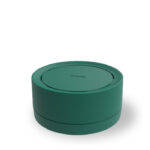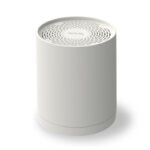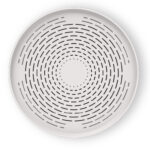The mysteries of pollution: even the Sistine Chapel at risk

Women absorb up to 2 kg of pollutants a year from cosmetics

Cosmetics used to care for one’s skin, in most cases, contain endless ingredients that are harmful to our health. For example, a single lipstick or inside a tube of foundation can contain millions of tons of carbon dioxide and countless microplastic particles. Pollutants released from cosmetics, but also from other types of everyday products such as deodorant, shampoo and toothpaste, are identified as volatile organic compounds.
These chemical compounds have the ability to disperse very easily in the air and end up being ingested through breathing. Volatile organic compounds in the environment have a high polluting power, and the fact that they are invisible to our eyes makes them even more dangerous.
Most household appliances consume energy even when in standby mode

The red lights on our home appliances, which remain on when we are not using them, indicate that the appliance is still active.
This is the paradox of home appliances that appear to be off but are actually producing energy. According to an analysis conducted by E.ON Energia, out of 1,300 household customers, the average consumption of a user is about 2,400 kWh/year. Of this total, the consumption of household appliances left on standby or always on without a real need is 600 kWh/year, or a quarter of the total.
These habits, besides weighing on our wallets, also negatively affect the environment and consequently our health.
Emitting electromagnetic radiation and a large amount of CO2, household appliances are among the main contributors to indoor pollution.
The presence of harmful substances makes the home a less comfortable and safe place. If air quality is poor, breathing and blood circulation can be affected, and exposure to electromagnetic waves can be the trigger for disorders affecting our health.
Sending an email pollutes as much as a plastic bag

In the paperless world of digital we think we have all become greener. Unfortunately, that is not really the case. The Internet on the one hand saves so much paper, but we should not think that just because we surf the Web we don’t see material being consumed, it means there is no impact on the environment.
Sending an email emits CO2 into the atmosphere. Sending an email consumes electricity, which is almost always produced by burning gas or oil.
In particular, sending an email, especially short ones without attachments, is the source of the emission of about 10 grams of carbon dioxide, the same as that corresponding to a plastic bag.
In an increasingly digital world, the pollutants we produce are not discernible to our senses, but that does not mean they are not a tangible and concrete problem.
Pollution ages the skin (and the brain!)

In the air we breathe on a daily basis there are fine particles (PM) that can penetrate the epidermis and come into contact with the living cells of the skin until they diffuse into the bloodstream. The skin itself shows no particular changes, but the work the cells have to do to neutralize the micro particles leads to premature aging of the skin. To date, there is growing evidence that particulate matter is also responsible for the onset of skin cancers, as well as lung cancers.
Not only that. Particulate matter also damages the brain by weakening memory and increasing the risk of dementia. A groundbreaking study conducted by researchers from the Department of Biomedical, Metabolic and Neuroscience Sciences has shown a link between air pollution and neurological disorders.
The study’s authors estimate that increasing ambient pollution levels by 10 µg/m3 of PM2.5 results in an effect similar to that exerted by one year of anagraphic age, with a true premature aging effect induced by high levels of air pollution.
Polluted air thus affects not only physical health but also mental health.
According to WHO, about 92 percent of the world’s population breathes polluted air

According to the World Health Organization (WHO), air pollution is linked to more than 10 percent of all deaths worldwide. An estimated 92 percent of the world’s population breathes polluted air where environmental parameters exceed safe limits.
Pollution of indoor air with cooking fumes, stoves and other kinds of combustion from cigarettes, candles, accidental fires, electrical and electronic devices, and so on, pose a lethal risk to building occupants.
Among the most dangerous pollutants found in indoor places is particulate matter (PM 2.5), a carrier of respiratory tract infections that precede cardiovascular disease, stroke, chronic lung disease, and cancer.
According to data in the “Zero pollution” report, prepared by the European Union Agency for the Environment, Italy is among the EU member countries with the highest numbers of deaths attributable to pollution, particularly air pollution: they are 13.2 percentof annual deaths, among the highest percentages in the EU. Exposure to particulate matter from air pollution is the main contributor.
Air pollution is compromising the Sistine Chapel

The Sistine Chapel, because of the high number of visitors and the carbon dioxide they emit, is inexorably fading.
”Six million visitors to the Sistine Chapel in one year is to be considered the sold-out number, which is what I hope we don’t go to so as not to compromise the best environmental conditions. Because a higher number would be neither useful nor manageable.” – says Antonio Paolucci, director of the Vatican Museums.
These are just some of the effects of one of the most globally debated topics: air pollution.







